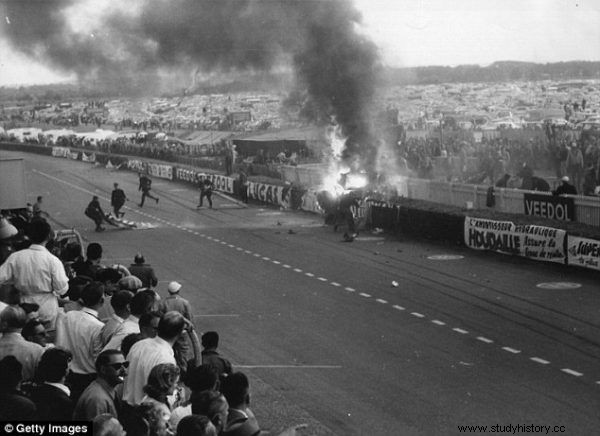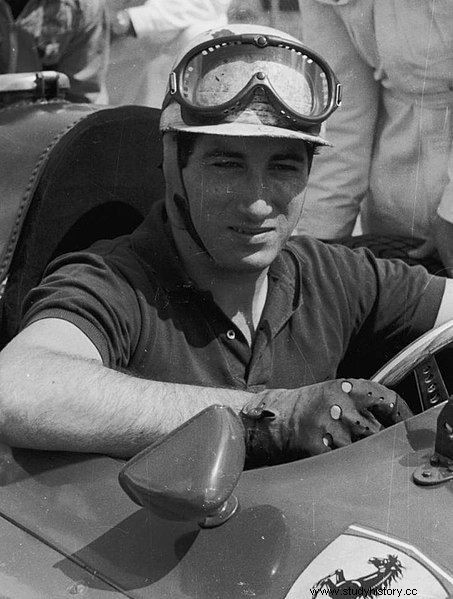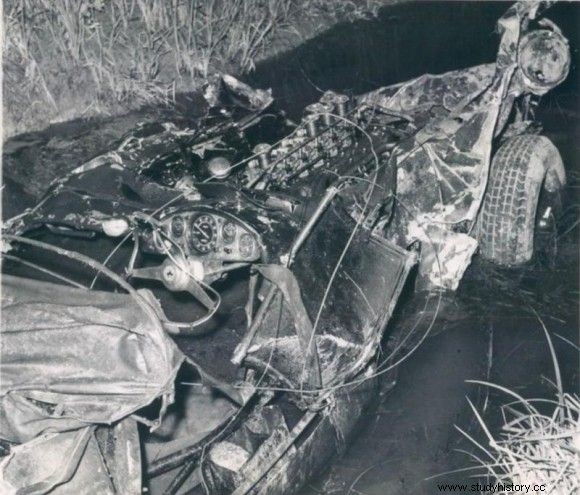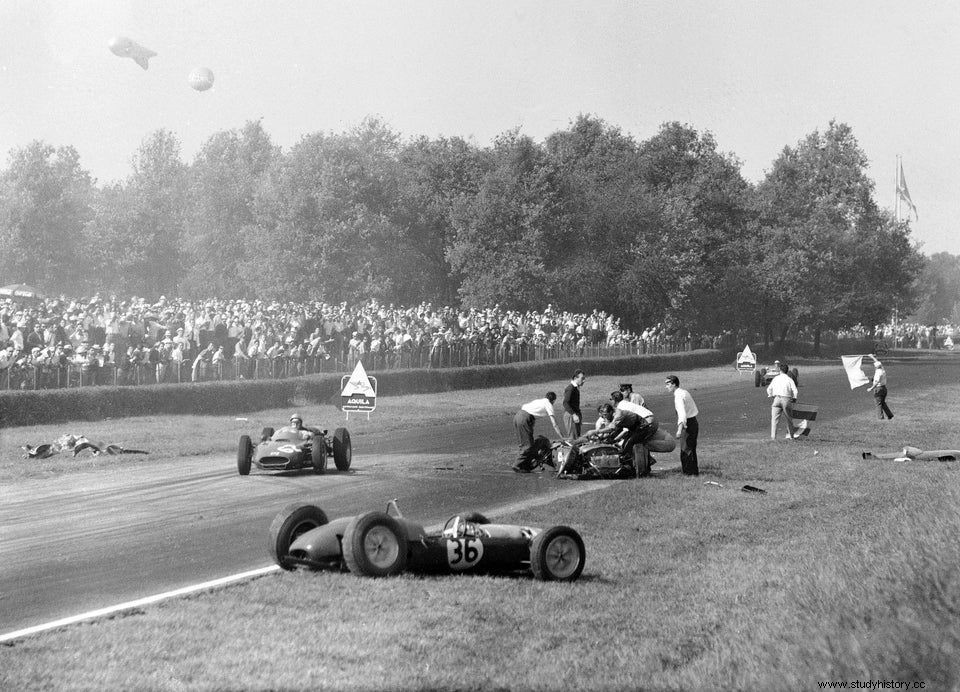strong> The 1950s and 1960s were a time of post-war heyday of races, in which relatives and fearless drivers participated. The racers preferred to put their lives at stake, rather than slow down or let go of a dangerous maneuver. On the other hand, manufacturers have constantly modified their racing cars to increase their power while reducing weight. One small mistake could lead to a catastrophe.
headless French
On June 23, 1951, the start of the Le Mans 24h race, Jean Larivière leads the Ferrari 212 Export. The Frenchman is in the middle of the sixth lap when he loses control of the machine and runs into the metal net. Larivière's brutal contact with the wire fence beheaded him.
Despite this tragic accident in the vehicle itself, it is enough to fix the dents on the car body. The new owner of the Ferrari is young American Phil Hill, future three-time Le Mans 24h winner and Formula 1 champion.
Metal elements thrower
The 24h Le Mans race, on June 11, 1955, Pierre Levegh driving a Mercedes battles a pushing Mike Hawthorn driving a Jaguar. Hawthorn going to the box, sharply brakes and blocks the way of the speeding Levegh machine.

The most tragic accident in the history of racing, depending on sources, up to 96 people lost their lives - 24 hours of Le Mans 1955
The French tries to save himself by escaping to a nearby alley, but too much speed difference and short distance caused the Mercedes to catch on the back of the Jaguar. Levegh's car bounces at a speed of 240 km / h to a height of four meters and heads towards the audience . It sticks into the embankment, becoming a deadly launcher of metal elements that damage the bodies of fans, causing death, depending on the source, up to 96 people. Despite this tragedy, the race is in full swing, and the winner is the jaguar at the controls with Ivor Bueb and… Mike Hawthorn. The 1955 Le Mans circuit crash is the biggest ever in a sports race.
Aristocrat cut in half
On May 12, 1957, the Mille Miglia 1,000 mile race is now underway. This rally is loved by Italians who, from Brescia to Rome, besiege the entire route, cheering on their favorites. Just a few dozen kilometers from the starting line, the Ferrari 335, driven by the Spanish Marquis Alfonso de Portaga, blows off the route, hits a telephone pole, smashes through the gathered fans at Guidizzolo and lands in a ditch. P 12 people are killed in the accident, the marquess's body is cut in half, and parts of his body land in different places.
The Guidizzolo tragedy gained international fame as Alfonso de Portago was known to the general public for his good performances at the World Cup and the Olympics in bobsleigh competitions, as well as high-profile love affairs with American model Dorian Leigh and Mexican actress Linda Christian. After this catastrophe, public opinion and the Italian media unanimously demanded that the organization of the Mille Miglia race be stopped, and soon the most popular rally through the streets of Italy did not take place.
The investigation revealed that Alfonso de Portago lost control of the vehicle as a result of a flat tire. One of the main accused was Enzo Ferrari himself, who used Englebert tires in his racing cars. Theoretically, these tires could not be used in vehicles developing as high as Ferrari cars. Finally, the Italian constructor was acquitted.

Racing driver and world famous lover - Marquis Alfonso de Portago in his Ferrari
A Frenchman with an artificial ear
French racing driver Jean Behr has had over a dozen car accidents in his career. In one of them, in 1955, he lost his auricle. However, after this crash, his racing enthusiasm and sense of humor did not disappear - he surprised his interlocutors by unexpectedly pulling off a new artificial ear. After the death of the Marquis Alfons de Portaga in Mille Miglia, Jean Behr summed up the risk of racing drivers:
Only those who do not move do not die. But are they not dead anymore?

Completely destroyed Ferrari during Mille Miglia 1957
On August 1, 1959, during the Berlin Grand Prix, Jean Behr lost control of his Porsche in a heavy rain, in an accident he fell with great force from the car and, as one witness described the last moment in Behr's life:
He was visible for a moment against the sky with his arms outstretched, as if he was trying to fly.
Count at the wheel
On September 10, 1961, German Count Wolfgang von Trips represented the Ferrari team at the Italian Formula 1 Grand Prix. He entered one of the toughest turns on the Monza von Trips circuit at speeds over 160 km / h, competing fiercely with the Scot Jimmy Clark in a lotus. After accidentally touching the wheels of both vehicles, the German lost control of his car and crashed into the track barrier and passed the green area buffer. Then he plunged his machine with enormous force into the metal mesh, which was theoretically supposed to ensure the safety of the audience.

Count von Trips' accident resulted in the death of a dozen or so fans and the German driver himself
The Ferrari wreck killed 14 spectators and another fan died in the hospital. After this catastrophe, the whole situation was commented on by the American Phil Hill, winner of the Italian Grand Prix and also teammate of von Trips:
I don't know [if I want to quit racing]. I haven't made my decision yet. Eventually we will all die anyway. Isn't it great that von Trips died doing something he loved, without pain, without any warning? I think Trips would rather be dead than stop racing (...).
Although many excellent drivers, such as Ken Miles and Bruce McLaren, have died over the next decade since the count's accident, from the 1960s, sports car manufacturers began an era of rapid technological development in terms of, among others, aerodynamics, strength of individual components, precision of driving the car and safety.
